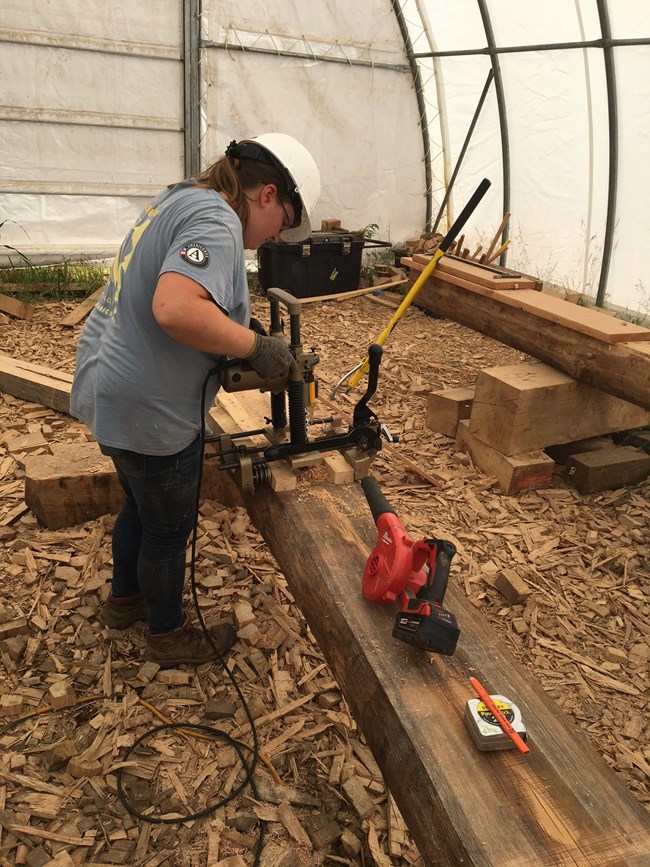Last updated: March 11, 2022
Article
Helen Kachur - Maintenance Worker Preservationist

NPS
What is your name and job title?
Helen Kachur, Maintenance Worker Preservationist with the wood crafting section.
What drove you to choose your career path? How did you go about getting your job?
In all honesty, I never set out to work in the field of historic preservation. Prior to the job I have now, I worked retail at a department store and had no idea where my career path was going to take me – but what I did know was that I didn’t want to work behind a desk for the rest of my life. As I explored my interests outside of work, I started to become more and more fascinated by the idea of woodworking, which appealed not only to my desire to be outside but also my love of working hands-on with things. I was very lucky that someone I knew alerted me to an ad posted online for TTAP (the Traditional Trades Apprenticeship Program) with the Historic Preservation Training Center (HPTC) through AmeriCorps. It sounded like everything I had been looking for, so I applied right then and there to become an intern. After about a year, I applied for a full-time position at HPTC.
What do people under/over value about what you do?
For undervaluing, some people believe that the job I do involves more brawn than brains. The truth is however, that a lot of thought and meticulous planning goes into every project we do. Good woodworking also involves a lot of very precise practical mathematics – if you calculate things wrong, then that window sash you’re building will never fit together as a cohesive whole.
For overvaluing, I think there is a bit of a misconception that we always go in and totally rebuild or restore the buildings we work on; which, while it does happen, is not the norm. There are many different types of preservation, but often we do our best to save any part of the original historic material that we can – rebuilding is mostly only an option if the part of the building in question is completely rotted or otherwise unsalvageable.

NPS
What advice would you give to those aspiring to join your profession?
My advice would be to look for classes and training opportunities in your area. There are so many local woodworking classes scattered throughout the country that are a great starting point if you come to the profession with no prior experience like I did. While you’re there, talk to your instructors (or anyone else already in the field) about how to progress further in your career; networking to get into the woodworking business is more important than you think, and they may have some great resources or ideas on how or where to take your next steps.
What is your favorite part of being an (architect, project manager, contracting officer, etc.)?
I think my favorite part is the sheer variety of projects I’m able to take part in. One thing I truly hated about retail was the fact that it was basically doing the same thing every day, week after week, year after year. At HPTC, I get to work on multiple different projects every year that all vary wildly in both scope and the skills needed to complete them.
Are there any misconceptions people often have about your job? If so, what are they?
I don’t know that everyone realizes just how much physical labor goes into this job. People in my life will hear me talk about the projects I’ve worked on and the places I’ve been and focus on the ‘cool’ parts of the job without considering all the hard work involved. We’re not doing delicate projects here – we’re often moving large pieces of lumber around and using some heavy machinery. There’s a reason that part of the job requirements is the ability to lift at least 50 pounds. Furthermore, if you want a job in this field, you must be prepared to work in all weather conditions. I’ve worked on roofs in the middle of summer when all the sunscreen in the world wouldn’t stop you getting red in the sun and out in the open in the dead of winter while there’s snow on the ground. I’ve even worked in the rain! You don’t really get to opt out due to weather – you just have to occasionally get comfortable with being uncomfortable.
